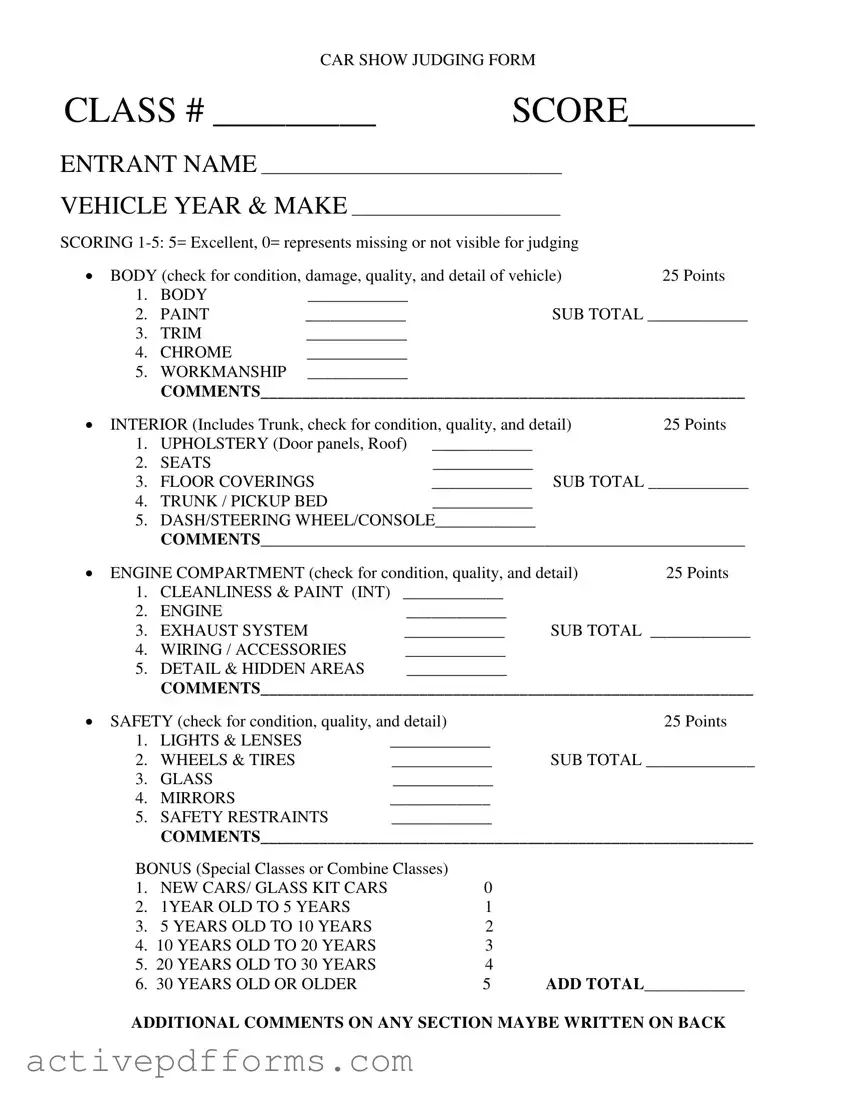Several misconceptions exist about the Car Show Judging Form that need clarification to ensure all entrants have a full understanding of the judging process. Here are four common misconceptions:
- Judging is purely subjective.
Many assume that scoring is based solely on the judges' personal preferences. However, the form clearly outlines specific categories with scoring criteria, such as body condition, paint, and interior quality, emphasizing an objective approach to evaluation.
- Only external features matter.
This misunderstanding might arise from the belief that a car's exterior appearance weighs more heavily than its internal condition. The form divides points equally among body, interior, engine compartment, and safety, proving that both external beauty and internal quality are crucial for a high score.
- Older vehicles are at a disadvantage.
Some might think newer vehicles automatically score higher. However, the bonus points section rewards vehicles' age, offering up to 5 points for cars 30 years old or older, leveling the playing field and recognizing the value of vintage and classic cars.
- The scoring system is complicated.
At first glance, entrants might feel overwhelmed by the detailed scoring system. However, each section clearly specifies what is being judged, such as cleanliness, paint, and safety features, with a straightforward scoring range from 0 to 5, making it accessible and understandable for participants.
Understanding these misconceptions can enhance participants' preparation for the car show, ensuring they focus on all areas of their vehicle for judging and appreciate the fair, objective, and comprehensive approach the judging form provides.
